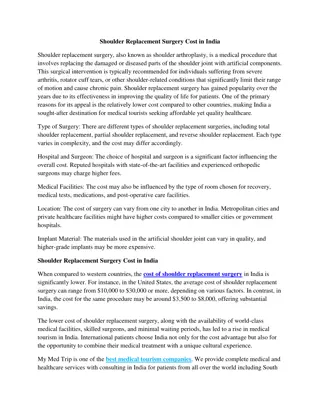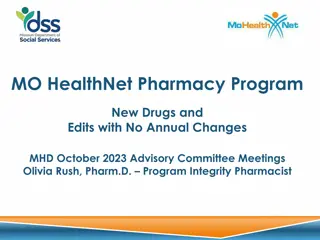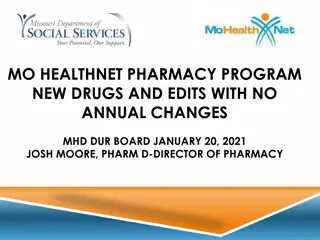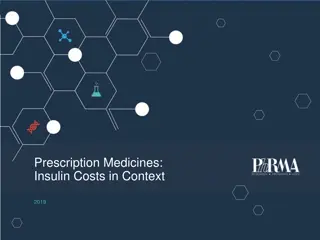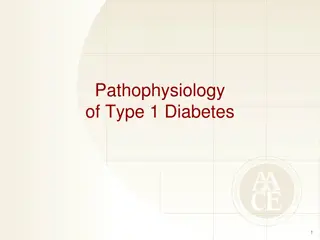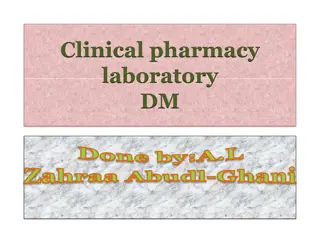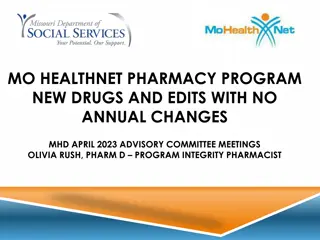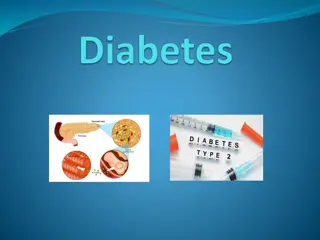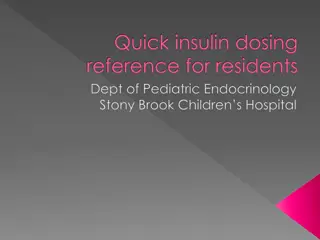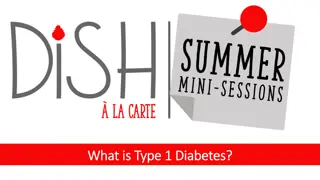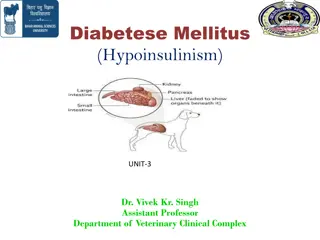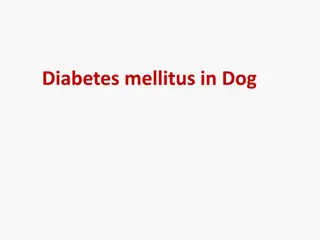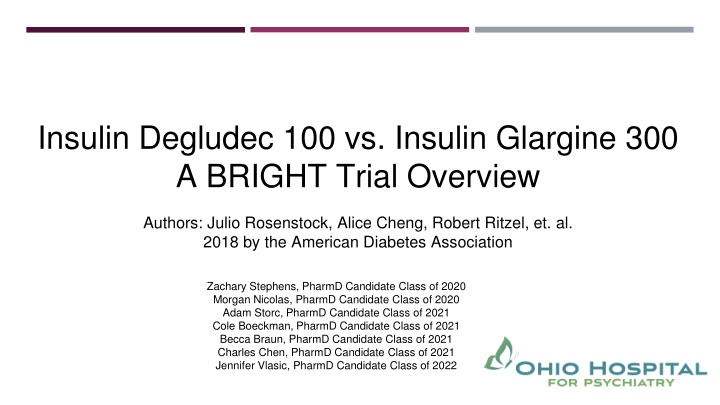
Insulin Degludec 100 vs. Insulin Glargine 300: BRIGHT Trial Overview
The BRIGHT trial compared the safety and efficacy of Insulin Degludec 100 and Insulin Glargine 300 in patients with uncontrolled Type II Diabetes. The study design, patient demographics, endpoints, and results are discussed, providing insights for pharmacy practice. Strengths and limitations of the study are also highlighted.
Download Presentation

Please find below an Image/Link to download the presentation.
The content on the website is provided AS IS for your information and personal use only. It may not be sold, licensed, or shared on other websites without obtaining consent from the author. If you encounter any issues during the download, it is possible that the publisher has removed the file from their server.
You are allowed to download the files provided on this website for personal or commercial use, subject to the condition that they are used lawfully. All files are the property of their respective owners.
The content on the website is provided AS IS for your information and personal use only. It may not be sold, licensed, or shared on other websites without obtaining consent from the author.
E N D
Presentation Transcript
Insulin Degludec 100 vs. Insulin Glargine 300 A BRIGHT Trial Overview Authors: Julio Rosenstock, Alice Cheng, Robert Ritzel, et. al. 2018 by the American Diabetes Association Zachary Stephens, PharmD Candidate Class of 2020 Morgan Nicolas, PharmD Candidate Class of 2020 Adam Storc, PharmD Candidate Class of 2021 Cole Boeckman, PharmD Candidate Class of 2021 Becca Braun, PharmD Candidate Class of 2021 Charles Chen, PharmD Candidate Class of 2021 Jennifer Vlasic, PharmD Candidate Class of 2022
Objectives - - Briefly explain background of study and purpose Summarize - Study design - Patient demographics - Endpoints - Inclusion and exclusion criteria Discuss results and implications in pharmacy practice Describe strengths and limitations of study - -
Background - BRIGHT is the first head to head trial comparing safety and efficacy of insulin degludec 100 (IDeg-100) and insulin glargine 300 (Gla-300) - Few trials exist comparing pharmacokinetics and pharmacodynamics of both insulins with conflicting data - Long acting basal insulins have a better drug profile - Longer duration of action - Flatter action profiles - Less day to day variability than NPH insulins
Study Design Inclusion Criteria Exclusion Criteria Multicenter*, open label, 24 weeks, randomized, noninferiority - Patients with uncontrolled Type II Diabetes (A1C >7.5% but <10.5%) on oral agents with or without GLP-1 receptor agonists - - Previous or current insulin use New glucose lowering or weight loss medications within 3 months BMI <25 kg/m2 or >40 kg/m2 History of T2DM for less than 1 year before screening Age <18 years Use of investigational drug(s) Uncontrolled HTN (SBP> 180 mmHg and/or DBP >95 mmHg) at screening History of heart attack, stroke or heart failure in the last 3 months Unstable proliferative diabetic retinopathy requiring treatment End stage renal disease Hypersensitivities to insulin - - Insulin degludec (N = 463) Insulin glargine (N = 466) - - - * Study was done across 158 sites in 16 different countries - - - -
Study Methods Insulin Dosing Algorithm Insulin therapy Initial insulin dosing Average starting dose (units) 10 units 10.2 IDeg-100 0.2 units/kg 16.9 Gla-300 - Dose adjustments occurred weekly. No more than every 3 days in the initial 12 week titration period This study was not designed to compared 1:1 insulin dosing of IDeg-100 and Gla-300 FSMPG goal was between 80-100 mg/dL Dose increase was warranted with FSMPG > 100 mg/dL - - -
Primary Endpoint Change in HbA1c from baseline to week 24 Change in fasting plasma glucose Change in variability of 24 hour self monitored plasma glucose Percentage of participants reaching HbA1c goal < 7.0% at week 24 Percentage of participants reaching target HbA1c goal without confirmed hypoglycemia Secondary Endpoints Hypoglycemia: symptomatic event with confirmed glucose reading of <70 mg/dL or <54 mg/dL Severe Hypoglycemia: an event requiring assistance in administration of glucagon or other rescue action Nocturnal Hypoglycemia: hypoglycemia between midnight and 6am Confirmed Hypoglycemia: all inclusive of the above definitions Safety Endpoints
Results - 94.2% of patients completed 24 weeks of treatment - Mean HbA1c decreased for both study drugs in a similar manner - Least squares means difference of -0.05% (95% CI -0.15 - 0.05) - Demonstrates noninferiority of insulin (P < 0.0001) - Superiority not demonstrated - Absolute Gla-300 HbA1c decrease was 1.69% (8.72 7.03) - Absolute IDeg-100 HbA1c decrease was 1.54% (8.57 7.03)
Results Gla-300 vs IDeg-100 in HbA1c reduction over 24 weeks
Results - Higher incidence of anytime hypoglycemia in IDeg-100 arm during 12 week titration period No difference in nocturnal hypoglycemia rates in all comparissons Similar incidence of hypoglycemia between insulins seen during 0-24 weeks and 13-24 weeks - -
Resultss Treatment success was looked at as a patient having met HbA1c goal and simultaneously no hypoglycemic events by week 24 - - Approximately half of patients in each arm reached target HbA1c goal Hypoglycemia rates were not significantly different in patients that achieved target HbA1c without confirmed hypoglycemic events
Secondary Endpoints FPG Absolute Reduction (Relative Reduction): IDeg-100: [(182.12 114.54)/182.12] = 67.58 mg/dL (37%) Gla-300: [(190.6 123.76)/190.6] = 66.84 mg/dL (35%) *Variations in FSMPG are due to how and when samples were taken
Trial Discontinuation - Severe hypoglycemia documented in 1 patient in Gla-300 group - Attributed to skipping evening meal and not reducing insulin dose - This also followed a nonsevere event that happened 2 days earlier - Other adverse events lead to discontinuation - 4 patients in Gla-300 group - 5 patients in IDeg-100 group - 1 death occurred in Gla-300 group from adenocarcinoma
Discussion - The BRIGHT study was first head-to-head trial investigating efficacy and safety of two second-generation, longer-acting basal insulins The study showed Gla-300 and IDeg-100 were similar in HbA1c reduction and proportions of participants achieving HbA1c goal Study documented one severe hypoglycemic event occurred during 24 week trial - Documented cases of hypoglycemia <54 mg/dL: Gla-300 was 14.7% Ideg-100 was 18.4% - -
Discussion Insulin therapy Average starting dose (units/kg/day) Average final dose (units/kg/day) Dose increase over 24 weeks (units/kg/day) Average final dose (units) Absolute dose increase over 24 weeks (units) 0.12 0.43 0.31 39.2 29.1 IDeg-100 0.19 0.54 0.36 50.5 33.6 Gla-300 - Initial and final dose of Gla-300 was higher in both absolute and units/kg/day - Gla-300 dosing was more aggressive across the 24 weeks - More aggressive treatment in glargine group we would expect more hypoglycemic events
Discussion Strengths Limitations - - - Head-to-head randomized trial Large sample size (n=924) Powered to assess primary end point change in HbA1c over 24 weeks Hypoglycemia <54 mg/dL: - Treatment not documented - Not defined as severe hypoglycemia Open label design: - Investigator bias toward one insulin over the other
Conclusion With comparable glycemic control and similar safety profiles the two second-generation basal insulin analogs selection of which to use should be determined not just by the evaluation of clinical factors but mainly by practical factors such as access and cost
Clinical Significance - IDeg-100 and Gla-300 showed good efficacy in lowering A1C with relatively low side effect profiles and risks of hypoglycemia IDeg-100 had overall more hypoglycemic events at a lower dose where we would expect fewer hypoglycemic events compared to Gla-300 during titration If patient is experiencing hypoglycemia switching to Gla-300 could be clinically appropriate Cost consideration: Gla-300 is roughly three times more expensive than IDeg-100 - - -



